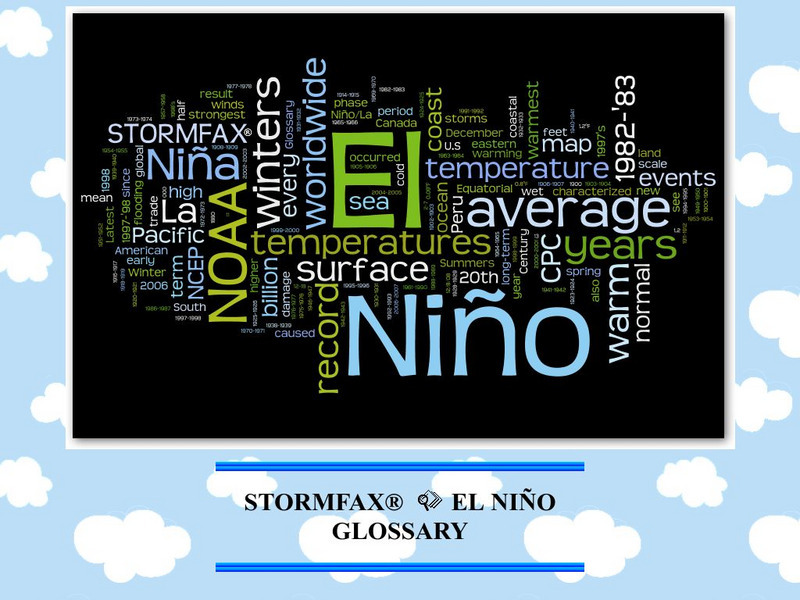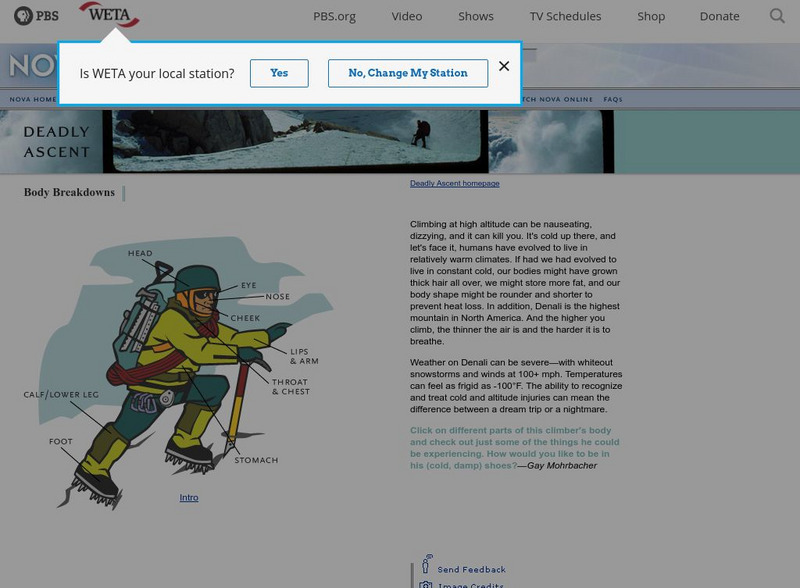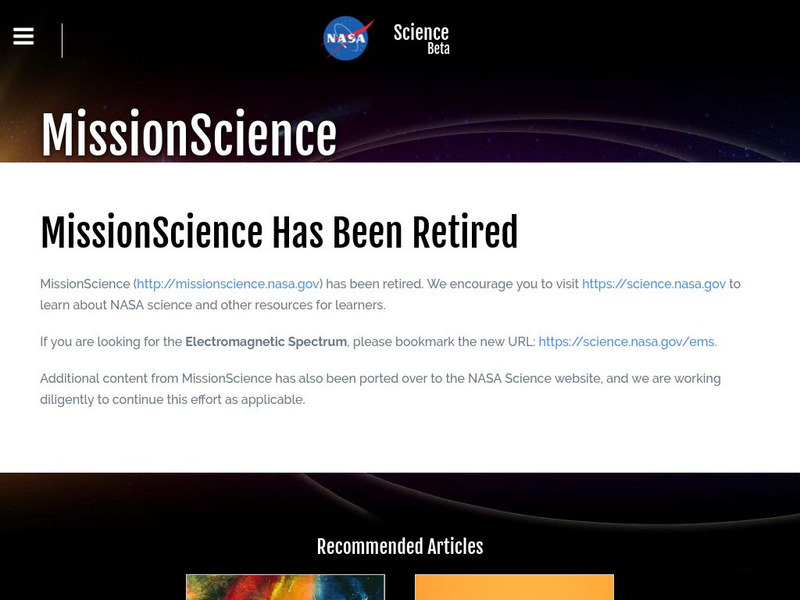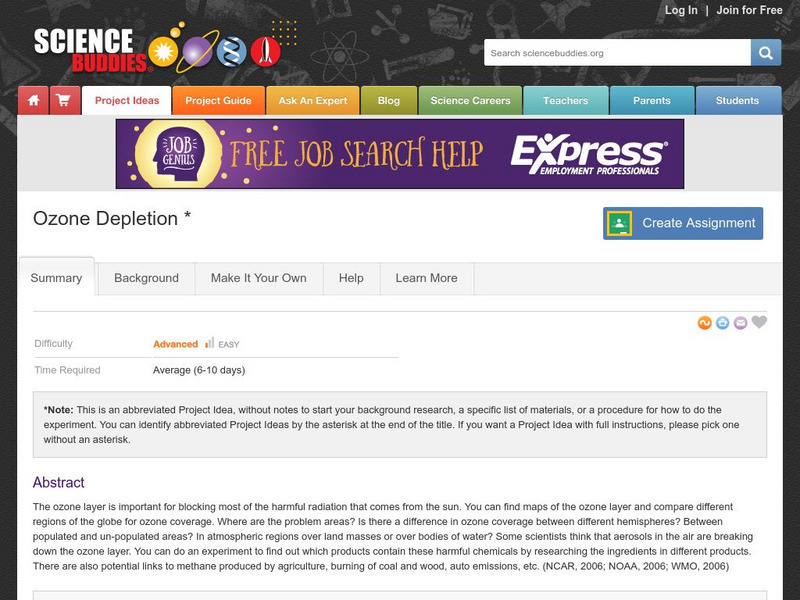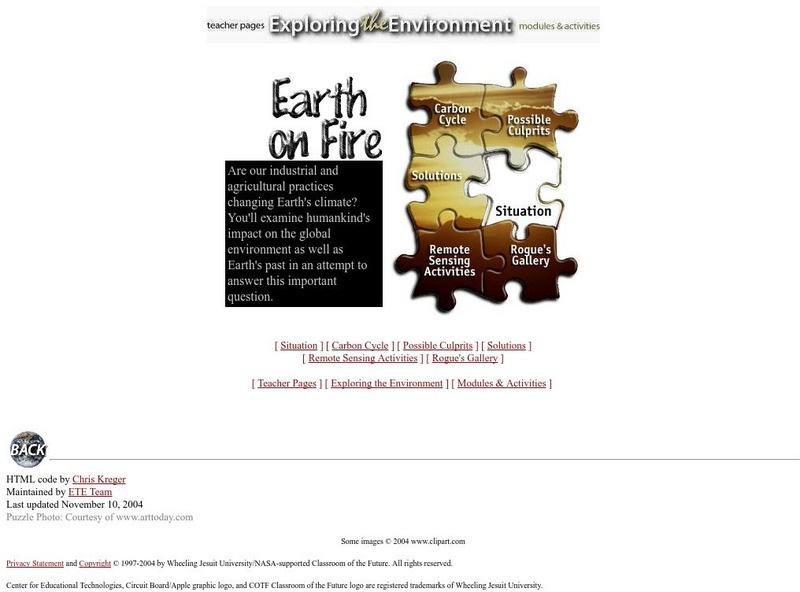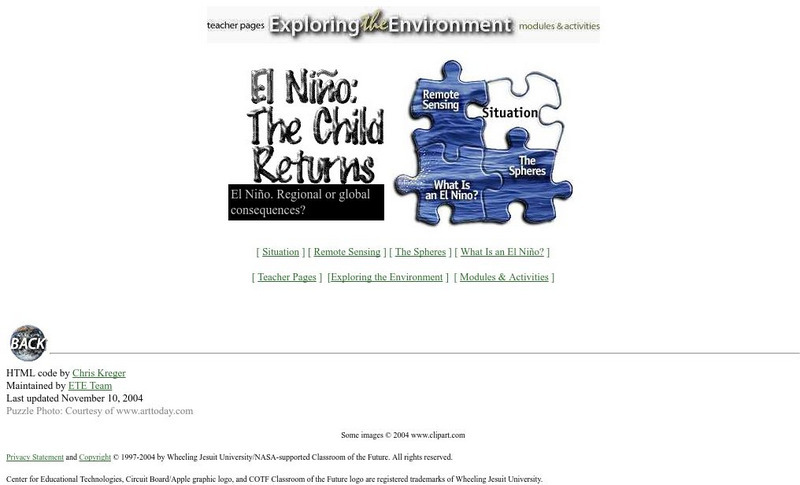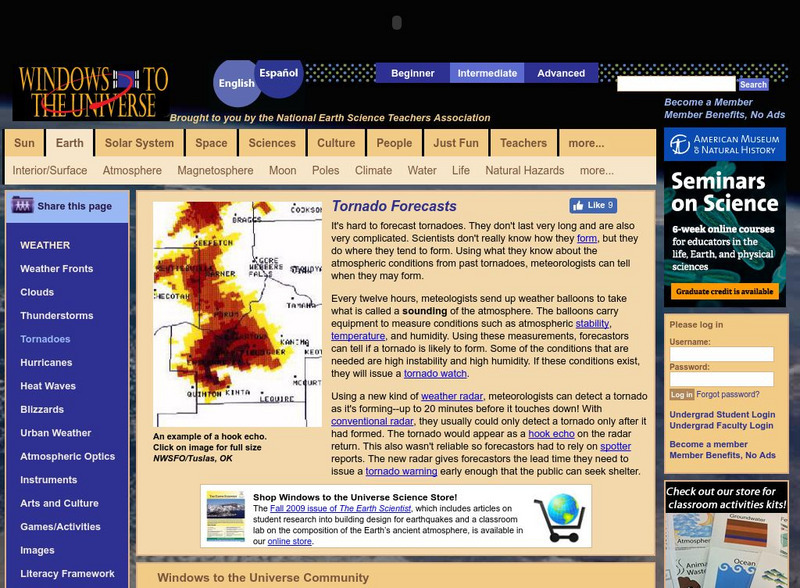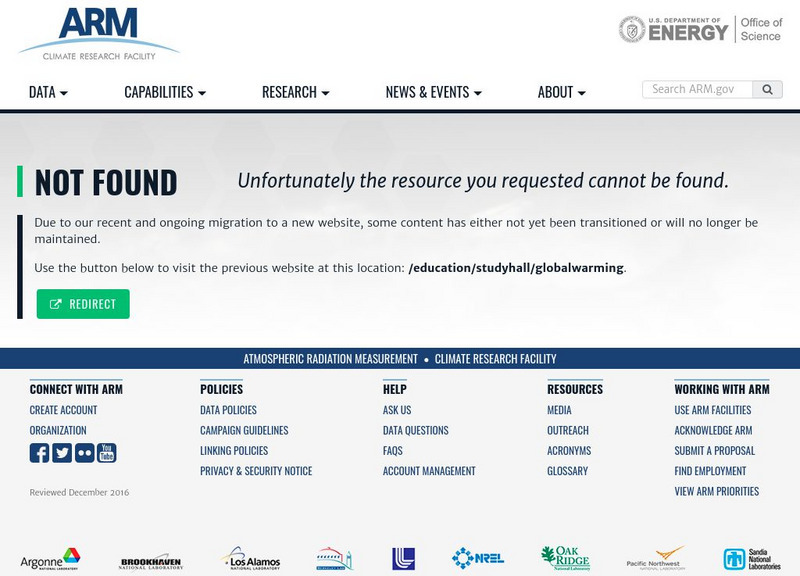NASA
Nasa: How Air Pressure Affects You
This site from NASA offers a general overview of air pressure. Explores the concept through experiments and interactive games, as well as discussion questions.
Other
Stormfax: El Nino Glossary
This site offers definitions for terms related to El Nino, including information on southern oscillation and its relationship to the trade winds.
Other
National Pollutant Inventory: Background Information
This site focuses on water and air pollution in Australia, with a brief mention of sea breezes.
PBS
Pbs Teachers: Deadly Ascent: Body Breakdowns
Explore the injuries mountain climbers can sustain when they reach high altitudes, and discover how extreme cold can damage the human body.
Ducksters
Ducksters: Earth Science for Kids: Tsunamis
Investigate tsunamis including what causes them such as earthquakes, where they occur, why they are dangerous, and what happens during a tsunami event on this website.
TeachEngineering
Teach Engineering: Distorted Disturbances
Students pass around and distort messages written on index cards to learn how we use signals from GPS occultations to study the atmosphere. The cards represent information sent from GPS satellites being distorted as they pass through...
TeachEngineering
Teach Engineering: Air Pollution
Students are introduced to the concept of air quality by investigating the composition, properties, atmospheric layers and everyday importance of air. They explore the sources and effects of visible and invisible air pollution. By...
Science Buddies
Science Buddies: It's Raining, It's Pouring: Chemical Analysis of Rainwater
Here is an interesting project that could be approached from several different scientific angles: Environmental Science, Weather & Atmosphere, Chemistry, or Plant Biology. You can probably think of your own variations to emphasize...
PBS
Pbs Learning Media: Greenland Mass Variation Since 2002
Scientists study ice sheets because they influence weather and climate, playing a role in atmospheric and ocean circulation. Ice sheets can also have huge impacts on global sea levels because they store so much water. Explore this...
NOAA
Noaa: Pmel: El Nino Theme Page
The National Oceanic and Atmospheric Administration (NOAA) sponsors this El Nino and La Nina resource site that features current and historic information about these weather systems with diagrams.
NASA
Nasa: Mysteries of the Sun
Learn about the study of the Sun's influence on the solar system called Heliophysics. This site contains videos on topics like Space Weather, Solar Variability, the Heliosphere, Earth's Magnetosphere, and the Earth's Upper Atmosphere.
Idaho State University
Global Wind Systems [Pdf]
A great description of the global scale circulation and heat energy. Discusses a single-cell model, a three-cell model, jet streams and more.
Science Buddies
Science Buddies: Ozone Depletion
The ozone layer is important for blocking most of the harmful radiation that comes from the sun. You can find maps of the ozone layer and compare different regions of the globe for ozone coverage. Some scientists think that aerosols in...
University Corporation for Atmospheric Research
Ucar: Wind
Wind is air moving from a place that has higher pressure to one that has lower pressure. Sometimes wind is just a light breeze and other times it is strong enough to blow the roofs off buildings.
University Corporation for Atmospheric Research
Ucar: Humidity
The amount of water vapor in the air is called humidity.
Center for Educational Technologies
Nasa Classroom of the Future: Earth on Fire
Information and activities looking at the impact of industrial and agricultural practices on global warming.
Center for Educational Technologies
Exploring the Environment El Nino: The Child Returns
Use remote sensing data and background information to look at regional and global consequences of El Nino. Try working with the 'situation' to test your understanding.
Science Education Resource Center at Carleton College
Serc: Danger in the Air
In this learning module, students are involved in an observational study of air pollutants in the atmosphere. The students collect and examine air quality and weather data, looking for correlations between weather and air quality.
NOAA
Noaa: Photo Library: Lightning Photo 1
The National Oceanic and Atmospheric Administration provides a photo library of severe weather formations. This photograph is of several strokes of lightning striking during a nighttime thunderstorm.
NOAA
Noaa: Photo Library: Severe Storms Laboratory: Catalog of Images
The National Oceanic and Atmospheric Administration provides a photo library of severe weather formations.
Climate Literacy
Clean: Introduction to Earth's Climate
This lesson is an introduction to Earth's climate and covers key principles regarding Earth's unique climate, atmosphere, and regional and temporal climate differences. Students will gain an understanding of how the weather and climate...
National Earth Science Teachers Association
Windows to the Universe: Tornado Forecasts
Scientists study tornado history to help forecast future occurrances. This article explains methods meteorologists use to best predict when tornadoes might develop.
US Senate
Us Senate Committee Commerce, Science and Transportation
The Senate Committee on Commerce, Science and Transportation has jurisdiction over several areas. Come and find out more about this powerful committee by checking out this resource.
Other
Arm Program's Education Center: Global Warming
An all purpose site with something for everyone. Learn about global warming and climate change, ask a scientist, take a quiz, or get a lesson plan!

